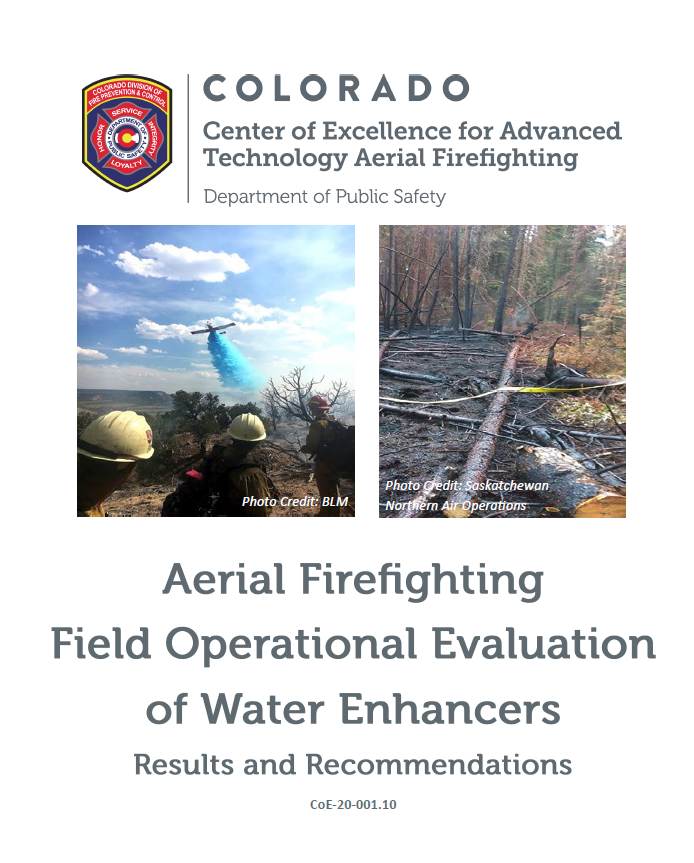
The following is an excerpt of fromthe report.
Purpose
The Center of Excellence for Advanced Technology Aerial Firefighting (CoE), with support from the Colorado Division of Fire Prevention and Control (DFPC’s) Aviation Unit and the Bureau of Land Management (BLM), conducted a study during the 2017–2019 wildland fire seasons to evaluate the effectiveness of water enhancers on wildfires by using single engine air tankers (SEATs) to test three products.
This report documents the results of the CoE study as well as key observations and recommendations for the effective use of water enhancers.
Introduction
The most common firefighting agents used in aerial firefighting in the United States are water and long-term retardant (LTR). Prior to this study, Colorado loaded only LTR in SEATs. LTRs are chemical concentrates mixed with water that alter fuels so that they do not support combustion.
Water enhancers are polymer products added to water to improve its fire-suppression characteristics. Plain water dropped from aircraft without the addition of water enhancers is actually a very inefficient suppressant. When it converts to steam, it has a great capacity to absorb and carry away heat. However, it also has a strong surface tension that causes it to bead up and roll off most fuels before it can absorb its full heat capacity. In essence, much of the water runs off the fuel. Typically, the terms polymer and elastomer are used to refer to firefighting gels—we use the term polymers to describe "super-absorbent polymers.” The cross-linking process allows them to absorb and retain a very large amount of water and builds viscosity and thickening without altering the other properties of the water.
The term elastomers is used to describe polymers that impart what is called “viscoelasticity,” or viscosity and elasticity together. This consistency is typically called rubbery; because they are lightly cross-linked they do not absorb as much water when mixed. In addition to building viscosity, they also add the elasticity so are referred to as elastomers. Read The Aerial Agent Test Report.

